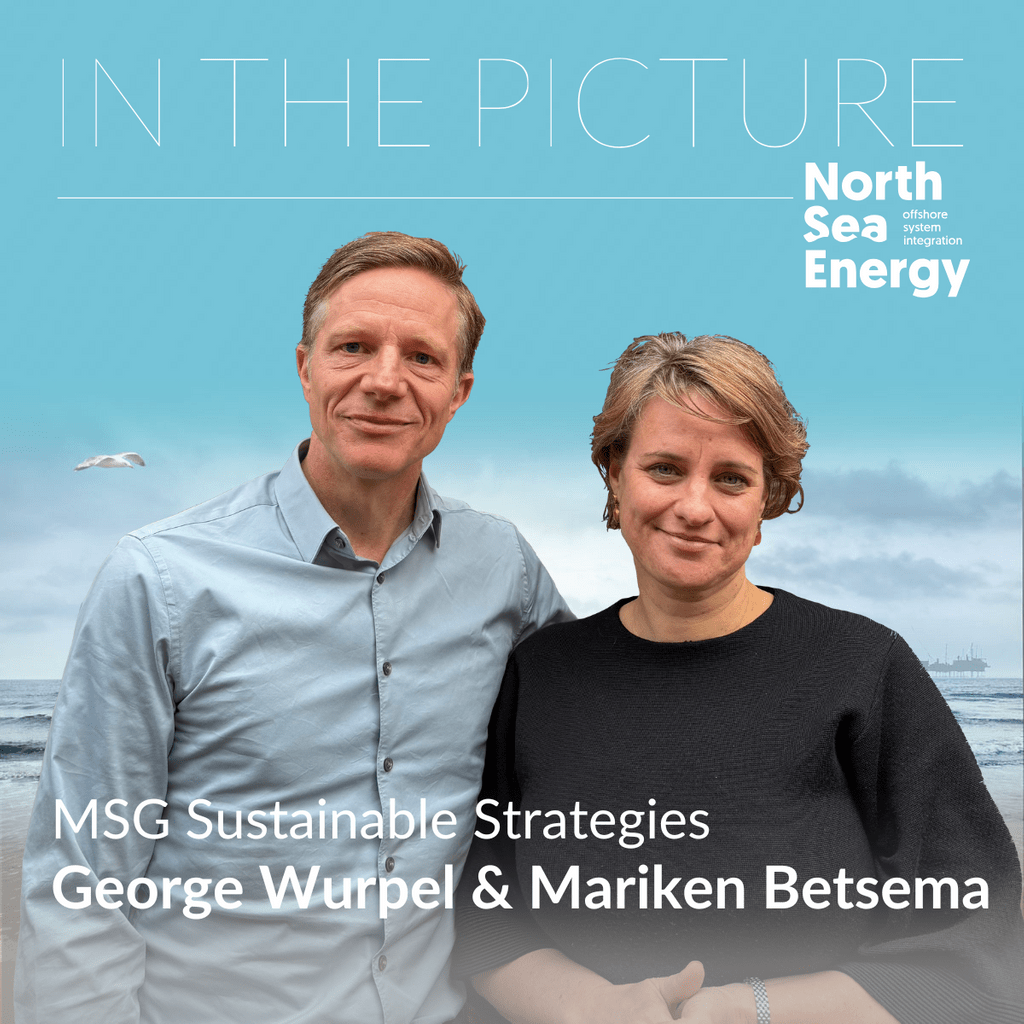Partner in the Picture: Mariken and George
February 10, 2025
Mariken Betsema and George Wurpel, MSG Sustainable Strategies
To enhance the participatory process, we interview North Sea Energy (NSE) participants and stakeholders to share their perspectives on the North Sea's role in the energy transition. Today, we speak with Mariken Betsema and George Wurpel from MSG Sustainable Strategies.
1. Welcome, Mariken and George! As an energy and climate consultancy, MSG is fully engaged in the energy transition. What is your role in it?
Mariken: At MSG, we focus on both offshore and onshore challenges in the energy transition. Offshore, in programs like NSE, we lead stakeholder engagement and plan the future development of the North Sea for clean energy production. For over 15 years, we’ve been working on offshore transitions, starting with a project on repurposing platform jackets for ecological purposes—a concept still relevant today.
George: Onshore, we support municipalities, regions, and government agencies in sustainable heating transitions. The challenge here is to ensure participation from all stakeholders, as the energy transition only works if everyone is on board.
2. MSG’s mission is to accelerate the energy transition. How does your approach work?
George: Our strategy is mainly based on three pillars:
- Participation: Ensuring all stakeholders are actively involved, whether they’re focused on local or offshore energy projects.
- Cooperation: Building partnerships with NGOs, research institutes, businesses, and communities to align interests and foster support for energy solutions.
- Communication: Translating complex issues into clear, actionable insights to improve decision-making and public understanding.
Mariken: Visualizing outcomes is central to our approach. Whether it’s infographics, white papers or ecological designs, visual tools help stakeholders reach agreements more efficiently. Our goal is to create not only technically sound plans but also solutions that are widely supported and provide actionable steps. We combine stakeholder insights to deliver practical outcomes, such as human capital agendas, ecological energy hub designs, or clear visuals like infographics. Visualizing concepts, both onshore and offshore, fosters better discussions and faster agreements. Our approach ensures plans are technically sound, widely supported, and actionable.
3. You work on several work packages within NSE. Can you share some highlights?
Mariken: Within NSE, MSG is involved in key areas like:
- Stakeholder engagement: We design ways to involve North Sea users—energy companies, fishermen, and environmental groups—ensuring all interests are considered.
- Human capital agenda: Addressing workforce challenges to ensure we have the skills needed for the offshore energy transition.
- Ecology and nature: Promoting nature-inclusive designs that balance energy production with environmental preservation.
- Communication: Collaborating with communication expert Susan Kimkes, we share NSE’s results broadly and integrate feedback from external experts via the NSE Sounding Board.
George: Our role in NSE is highly collaborative. By working with researchers, partners, and stakeholders, we gain valuable insights and contribute to well-rounded solutions.
4. You emphasize stakeholder engagement for successful energy projects. Why is it so important?
George: Broad stakeholder support is essential for the energy transition. We see stakeholder engagement not as an obligation but as an opportunity to build better solutions. Engaging people, addressing concerns, and incorporating their knowledge ensures plans are effective and widely accepted. Without this engagement, projects face resistance, delays, or even failure.
Mariken: The energy transition is a complex challenge, and it’s vital to involve local communities, businesses, environmental organizations, and policymakers. When everyone is part of the process, the outcomes are more sustainable and impactful.
5. How does NSE prioritize stakeholders in its approach?
Mariken: NSE is deeply committed to stakeholder involvement. This is evident in several ways:
- It promotes collaboration among diverse North Sea users, balancing energy goals with ecological preservation.
- Stakeholders play a key role in developing plans, providing input that ensures multiple interests are considered.
- As a research program, NSE emphasizes fact-based results and open communication with stakeholders.
George: By fostering dialogue and shared understanding, NSE creates sustainable and inclusive solutions. Our role is to drive these efforts by researching effective stakeholder strategies, ensuring the North Sea supports the energy transition while maintaining its ecological and economic value.
Thank you, Mariken and George, for sharing your insights!
